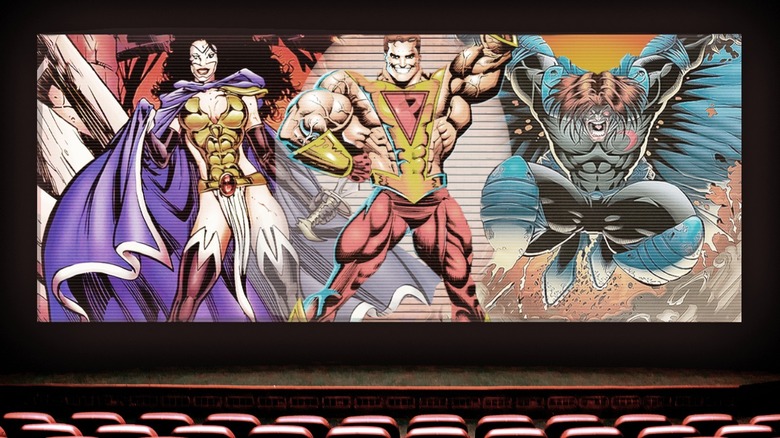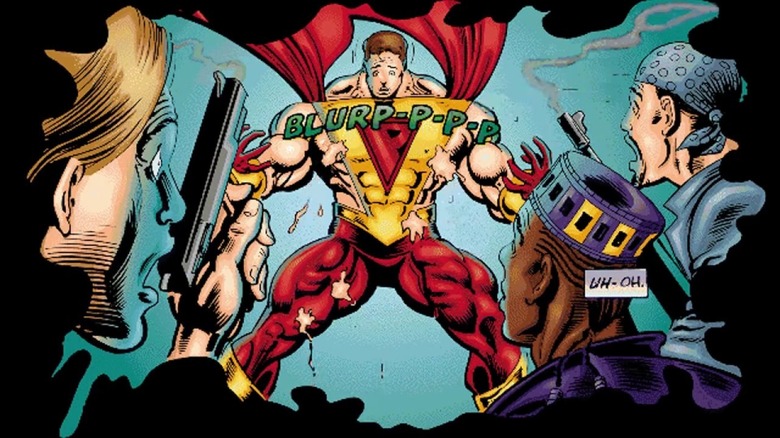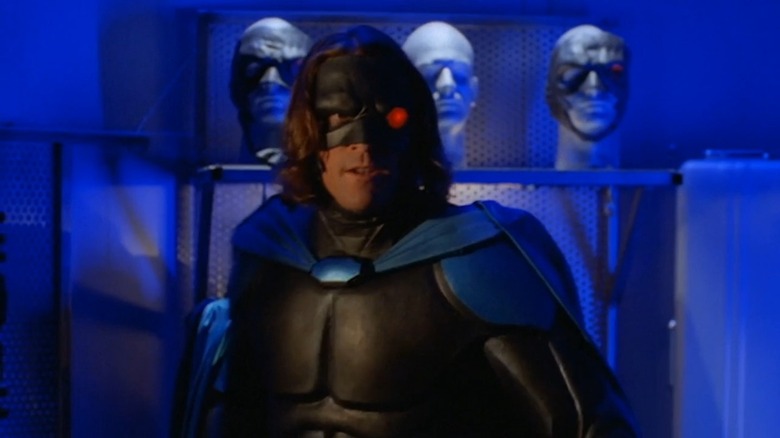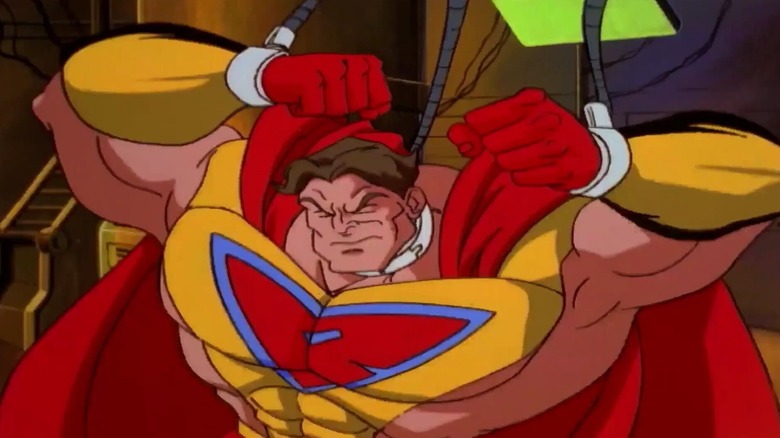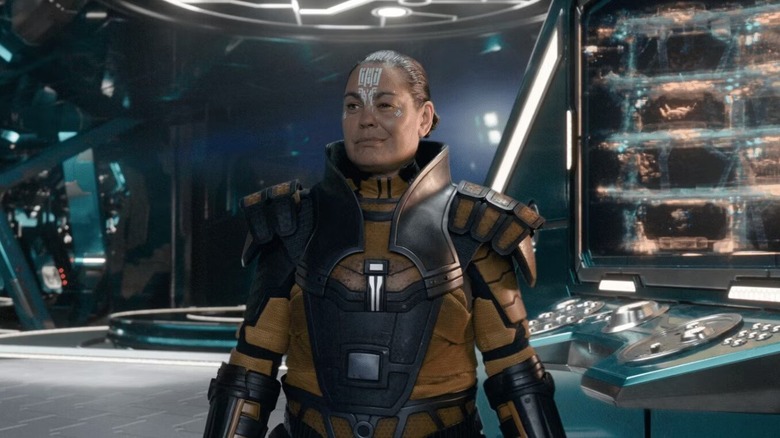The Ultraverse Is The Sleeping Giant Of Cinematic Universes, But It'll Never Happen (& It's Probably Marvel's Fault)
Everyone loves an underdog story, but history has a habit of only remembering the ambitious world-beaters who never stopped defying the odds. For example, the early '90s saw independent comic book publishers such as Image and Valiant take the fight to Marvel and DC, and they're still going strong to this day. However, there was another upstart publisher that made an impact back in the day, but long-term success never came.
Established in 1986, Malibu Comics was initially known for titles like "Dinosaur for Hire," "Ferret," "Protectors," and "The Men In Black" (you may have heard of this one). In 1993, however, the company launched its "Ultraverse" imprint to produce interconnected superhero comics such as "Prime," "Mantra," "Night Man," "The Strangers," "Sludge," and many more. The "Ultraverse" was successful for a while, but it all came crashing down in 1994 when the comic book industry experienced a sharp decline, forcing Malibu to sell its library to Marvel.
Malibu should be remembered as a company that reached for the stars and produced some excellent comics during its short run. Still, the "Ultraverse" deserves a second chance on the page and screen, and Marvel has the power to make it happen. The "Ultraverse" is ripe for a cinematic universe that could either cross-pollinate with the MCU or thrive as its own separate entity. Unfortunately, behind-the-scenes drama has seemingly crushed the possibility of that ever happening. With that in mind, let's revisit the "Ultraverse" and discuss its cinematic potential.
The Ultraverse comics are familiar, but strange
The "Ultraverse" never set out to reinvent the wheel. The comics are loaded with classic tropes and some of the characters are reminiscent of Marvel and DC's finest, but they bring some interesting twists to the more traditional ideas.
The "Prime" series is a standout example of the "Ultraverse" having fun with familiar concepts. It tells the story of a 13-year-old boy who has the power to transform into an adult with superpowers, but that doesn't stop him from being an awkward, immature teenager — even when he has to save the world. Think "Shazam!" meets "Superman." Similarly, "Freex" follows a group of mutant teenage superheroes who are essentially a riff on the "X-Men," but these misfits are from the streets. "Sludge" is Malibu's take on "Man-Thing" and "Swamp Thing," but the titular monster's touch causes his enemies' skin to grow abnormally large and suffocate them. "Night Man" chronicles the adventures of a saxophonist-turned-superhero who can hear people's most despicable thoughts; he's basically a telepathic Batman with a penchant for smooth jazz. "Ultraforce" is the superteam saga that gives "The Avengers" a run for its money. The list goes on.
Of course, the "Ultraverse" boasts some truly original creations as well. For example, "Mantra" tells the story of an ancient male warrior who gets reincarnated into the body of a woman 1500 years after his death, forcing him to experience the issues that women face on a daily basis.
The Ultraverse was on Hollywood's radar in the '90s
The '90s was a great era for superheroes on the small screen, but most of these shows were based on DC and Marvel properties. So, it's impressive that "Ultraverse" adaptations made it to the screen in the first place.
Despite its short-lived run in the pages of Malibu Comics, the "Ultraverse" still attracted the attention of TV networks. In 1995, an "Ultraforce" animated series — featuring Prime, Nightman, and other characters — was shown on the USA Network, though it only lasted for 13 episodes. Elsewhere, Glen A. Larson, the mastermind behind sci-fi hits such as the original "Battlestar Galactica" and "Alias," created a "Night Man" series in 1997. This one lasted for two seasons and featured a bizarre crossover episode with Larson's maligned '80s series "Manimal." Donald Trump also guest-starred in an episode.
"Ultraforce" and "Night Man" were adapted before Hollywood knew how to make great superhero shows, but they're still good fun. However, one Malibu property has enjoyed some success as a blockbuster film franchise. Released in 1997, "Men In Black" helped cement Will Smith as an A-list movie star and its success led to sequels and the "Men In Black: International" spin-off. The "Ultraverse" is just as good as "Men In Black," and the comics deserve their own blockbuster adaptations.
An Ultraverse cinematic universe has potential
Cinematic universes are a tricky thing to pull off. On one hand, every movie and series needs to have a distinct personality that sets it apart from the rest; on the other, the various moving parts must work together and contribute to the franchise's overarching storylines. The MCU is a prime example of a successful cinematic universe as it boasts everything from space operas ("Guardians of the Galaxy") to political thrillers ("Captain America: The Winter Soldier"), but every project is intricately connected.
The "Ultraverse" comics understood this mentality from the outset. For example, "Firearm" is a noir-inspired series about a private detective who doesn't possess any superpowers, and he really doesn't like superheroes. Meanwhile, "Rune" follows an ancient space vampire and incorporates horror elements into the mix. The stories span several genres and they're diverse, but they're still very much grounded in the same world. The comics have already laid the foundation for a strong cinematic universe.
Furthermore, if Marvel sees sense and brings the "Ultraverse" to the screen, these characters could be given fun modern makeovers. Copycats like Prime and the Freex could poke fun at their more famous counterparts, many of whom have been the subject of successful movies and TV shows. Plus, there's still enough originality there to create movies and shows that are unlike anything in the MCU or DCU at the moment. Sadly, we'll probably never see this dream come to fruition.
Marvel will barely touch the Ultraverse
Some "Ultraverse" characters have appeared in Marvel stories throughout the years. For example, Night Man has crossed paths with Wolverine and Gambit, while Rune has bumped into Venom. Topaz also appeared in "Thor: Ragnarok," suggesting that Marvel is open to bringing some of these characters to the screen. That said, while some of these heroes and villains can be found in Marvel titles on occasion, the company hasn't shown any interest in resurrecting them in a significant way.
According to former Marvel editor-in-chief Joe Quesada, Marvel is required to split a percentage of profits with the "Ultraverse" creators whenever they use their characters. In an interview from 2005 (per Stash My Comics), Quesada said that they wanted to relaunch the "Ultraverse," but a couple of factors prohibited them from doing so. "While this is a logistical nightmare because of the way the initial deal was structured, it's not the reason why we have chosen not to go near these characters, there is a bigger one, but I really don't feel like it's my place to make that dirty laundry public," he said.
However, "Ultraverse" writer Tom Mason previously stated that Disney and Marvel could make movies about these characters if they wanted to, and their finances wouldn't take a hit. During an appearance at WonderCon 2022, he claimed that the percentage of profits the creators would receive equates to "dinner money," so there must be other reasons for Marvel's negligence of the "Ultraverse." At the end of the day, it's unclear why Marvel doesn't want to give these characters a new lease of life, but it's a missed opportunity if they don't.
